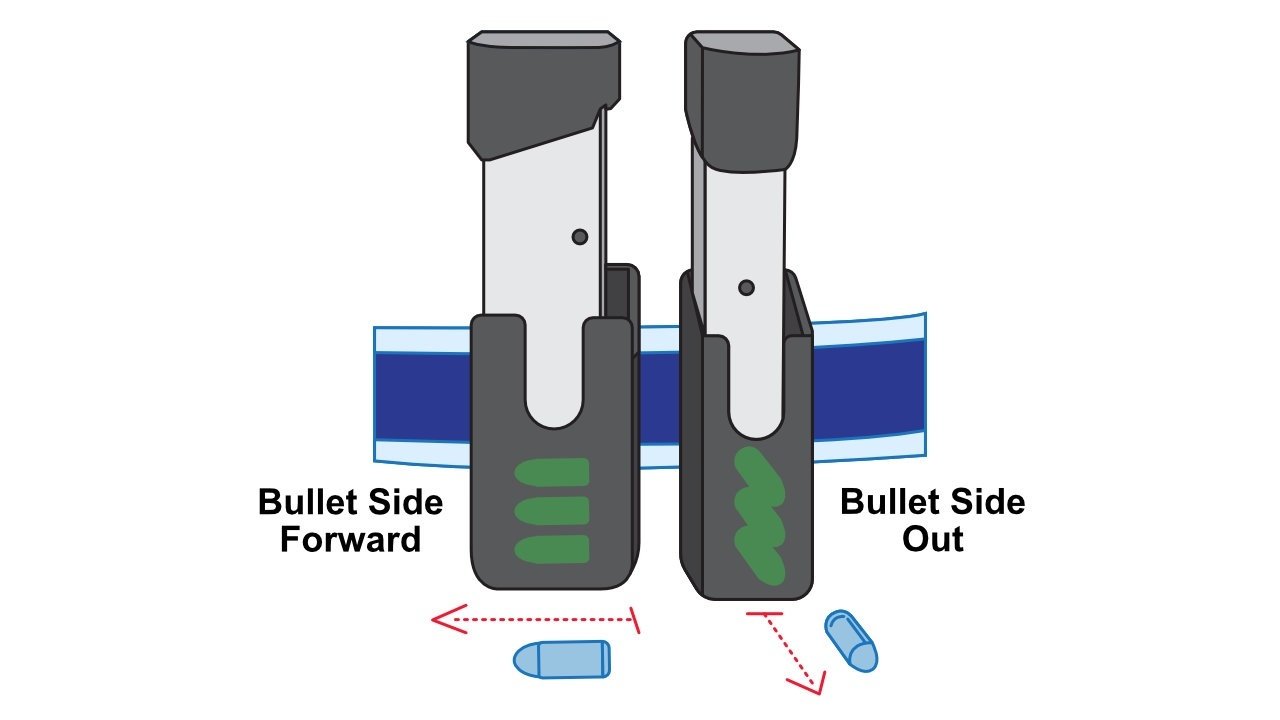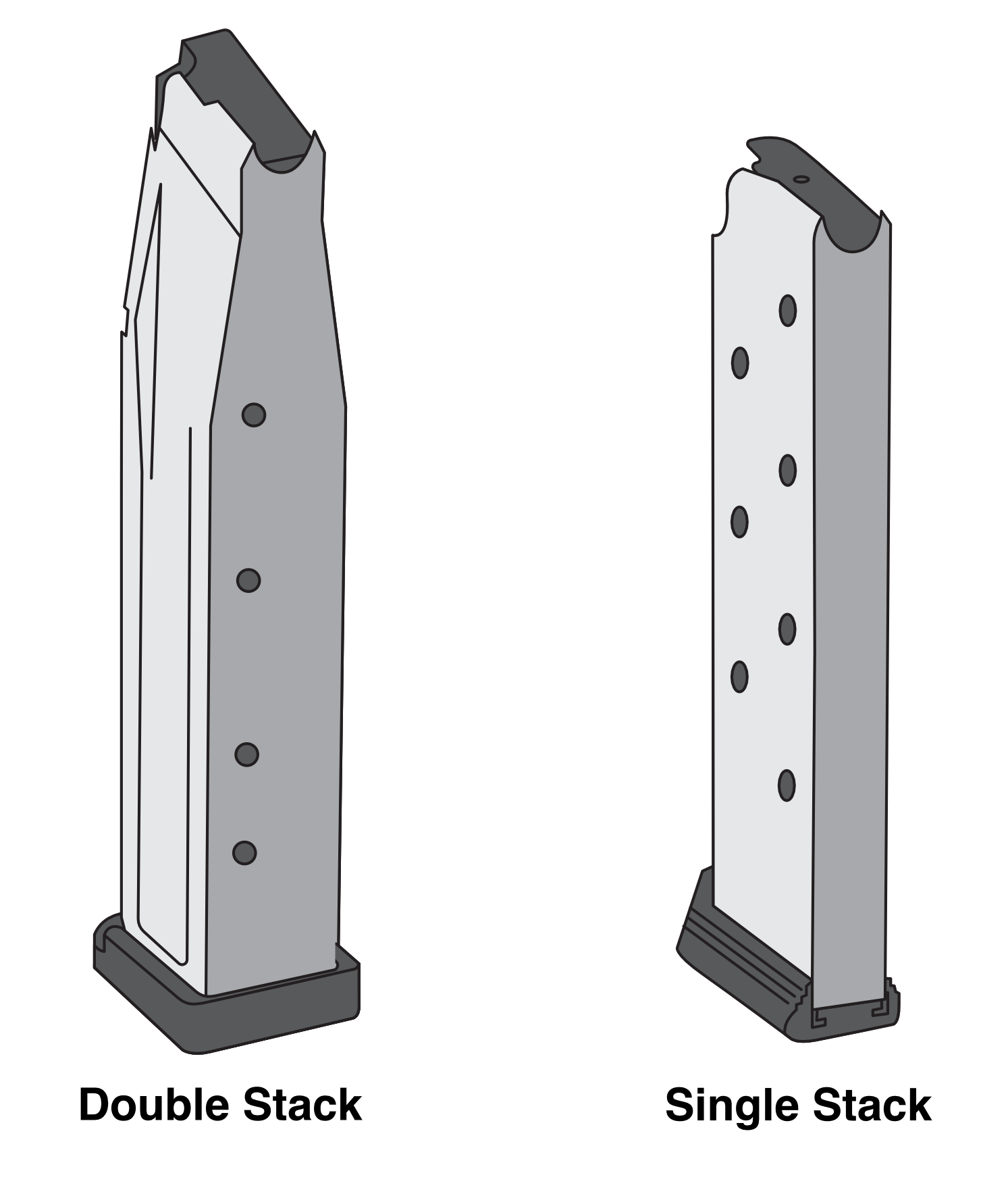How do you set up your Magazines, and how many do you need for competition?
If you are serious about pistol shooting sports, you will need spare magazines. Having enough loaded magazines before you start a stage ensures you can reload and complete the course of fire efficiently. Steel Challenge (SCSA) competitions do not require you to carry your spare magazines on your person, but USPSA does. Extra magazines should be located on the opposite side of your pistol and holster, as this allows you to reload quickly using your support hand.
How many Magazines do I need?
For Steel Challenge competitions, you will need a minimum of twenty-five rounds for a five-string stage—and this is if you shoot it perfectly! A competitor with ten-round magazines could load five of them with ten rounds to reduce any need to reload magazines during a single-stage run.
USPSA competitions offer the largest course of fire for a given stage. Competitors have to carry enough ammunition so they can reload quickly on the move from their belt. USPSA stages are classified into three different sizes: short, medium, and long, which correspond with the number of rounds needed for stage completion.
Short stages are twelve rounds or less. Medium stages require twelve to twenty rounds. Long stages require twenty to thirty-two rounds. If your magazines hold ten rounds, you would need at least four to five magazines and magazine pouches to complete the largest stage.
You will want to have more ammunition on your belt than the minimum the stage calls for because longer stages pose greater difficulty and may require makeup shots. To determine how many magazines you need, look at the largest stage in your match and do the math around what you will need to carry to finish that stage comfortably. The extra magazines can also be viewed as a backup in case of a malfunction, as you may need to eject a magazine to clear the firearm.
Magazine Types
Each pistol will use magazines that are designed to fit and reliably feed ammunition to your firearm. There are two basic types of magazines: single stack and double stack. The stack type refers to how the bullets are stored in the magazine before they feed into your pistol. Single-stack magazines stack each bullet, one on top of the other. Double-stack magazines stagger the bullets into two stacks, which converge into one as they feed into the pistol.
Stock magazines are designed to feed ammo reliably into your firearm. Additional aftermarket parts such as springs, followers, and base pads can increase the capacity of your existing magazines. You should test the reliability of your magazines, especially if you upgrade any of the components. You may need to adjust springs and feed lips to ensure proper bullet feeding and operation.
MAGAZINE POUCHES
The most basic magazine pouches are worn on your belt and hold your magazines vertically. Pouches should provide the right tension to hold magazines securely as you move through a stage. Some racing pouches allow you to adjust the cant of the pouch to facilitate a more natural grip without rotating your wrist. When you can simplify the motions around reloading a new magazine from your belt, you increase your speed and efficiency, which, over time, improves your score.
Each pouch should securely hold a fully loaded magazine. There are two ways to configure magazine pouches: the bullets pointing forward and the bullets pointing out or away from your belt. Aside from competition requirements, either method works well.
If you go with the “bullets out” option, more magazines can easily fit toward the front of your belt. This configuration is popular for competitors in the single stack division, where magazines that can only hold eight to ten rounds are required. However, suppose you are in a division that uses higher-capacity magazines. In that case, the “bullet-side forward” option is more popular because it requires less wrist motion to reach back and grab a magazine.
Competition Magazine Setup and Checklist
Before the Match
Know the Rules – Review USPSA or Steel Challenge division limits on magazine capacity and gear placement.
Check Stage Round Counts – Identify the longest stage and calculate the total rounds you’ll need.
Plan for Extras – Add at least one extra magazine for malfunctions or makeup shots.
Gear Selection
Choose the Right Magazines – Use reliable mags with competition-ready base pads if allowed.
Pick Quality Pouches – Secure retention, easy access, and consistent drawing angle.
Match Gear to Division – Ensure your belt, holster, and pouches comply with your division’s positioning rules.
Belt Setup
Place Pouches on Support-Hand Side – Arrange for quick, consistent reloads.
Stagger or Angle Pouches – Slight angles can improve access during reloads.
Test in Dry Fire – Practice reloads from each pouch to confirm comfort and speed.
On Match Day
Load All Magazines – Fill to the division limit before each stage.
Stage Walk-Through – Visualize reload points and confirm you have enough mags and ammo for that plan.
Have Spares in Your Range Bag – Keep additional loaded magazines ready between stages.




